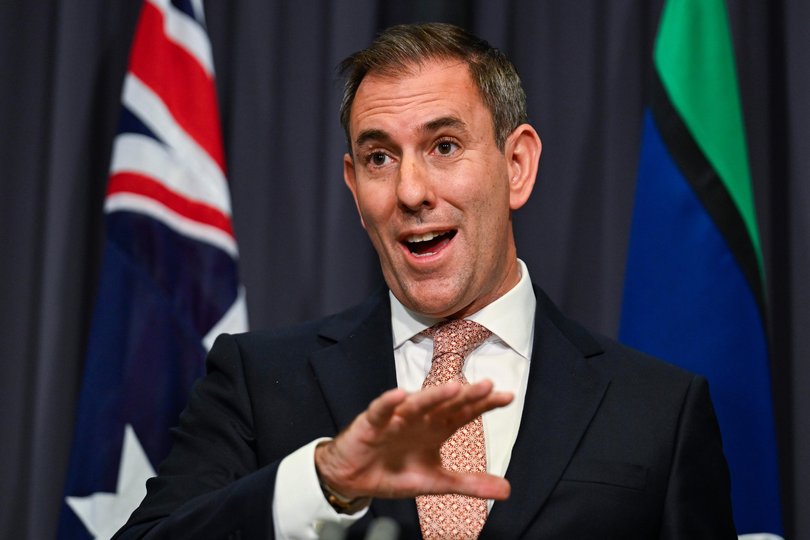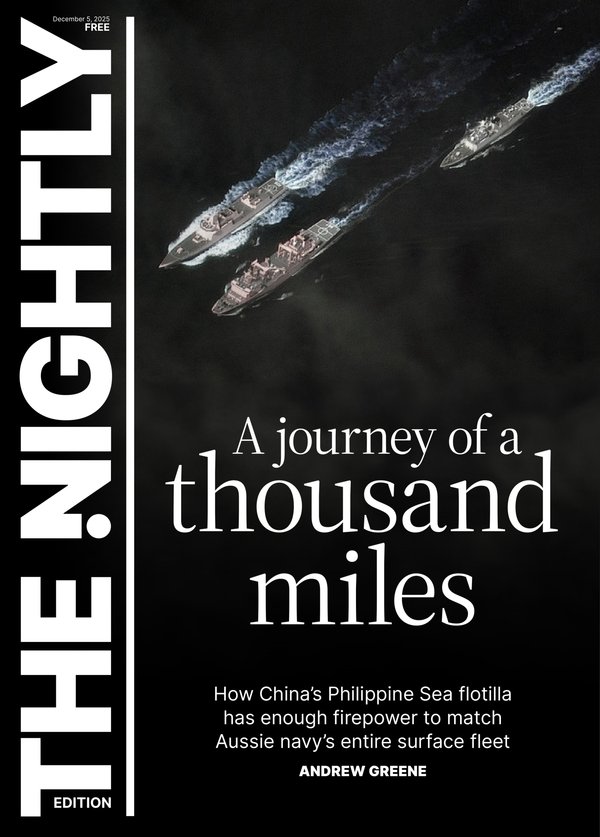JACKSON HEWETT: Labor plays the percentages with its super tax grab

If Labor pushes through its contentious changes to the taxation of superannuation balances over $3 million, the Treasurer will effectively be front-loading the Budget ahead of the next election at the expense of future earnings, experts say.
It is a neat strategy to pay down years of outsized government spending in a way that is electorally palatable but indicative of a government that is more focused on short-term gains at the expense of fundamental reform.
The policy, known as Division 296, only applies to balances of more than $3m and would result in an increase in the rate of taxation on earnings above that level from 15 per cent to 30 per cent.
Sign up to The Nightly's newsletters.
Get the first look at the digital newspaper, curated daily stories and breaking headlines delivered to your inbox.
By continuing you agree to our Terms and Privacy Policy.But the more pernicious policy is to tax the unrealised capital gains on balances over $3m, a proposal that has been described as fundamental violation of tax principles by the Tax Institute.
Treasurer Jim Chalmers yesterday confirmed, despite the clamour of opposition to the Bill, Labor was committed to putting the policy through.
“We took our agenda through the election, including the changes to superannuation tax concessions to make very generous concessions slightly less generous, but still generous. We would like to see that legislated in the Senate,” Dr Chalmers said.

The Government is budgeting an additional $2.3 billion in revenue year as a result of the changes, rising to $40b over the next decade.
Katie Timms, a partner at RSM Australia who leads its superannuation and SMSF practice, said much of the revenue would eventually have been collected by the Government via the death benefits tax of up to 15 per cent.
By triggering this change, Ms Timms said, the Government was forcing high balance holders to either pay the tax on gains now, or divest from a super fund into other assets and trigger capital gains tax.
“We’re really bringing forward this revenue, from maybe where it would have come eventually,” Ms Timms said.
Ms Timms said there was “a lot of panic” among clients trying to work out how to navigate the change, and said that many of her farming clients were particularly worried because the value of their properties had increased in value significantly but they regularly had fluctuating income based on seasonal conditions.
“A lot of unhappiness, a lot of frustration as these are generational assets that can have fairly significant fluctuations in value,” she said.
“And the biggest frustration is that when they have expressed their concerns to the Government, the Government’s response has been to tell them that all super funds are required to consider liquidity with regards to paying tax.
“They had considered liquidity based on taxing on actual income, not taxing on unrealised movements ... there’s a lot of feeling of it doesn’t feel fair.”
The policy is being vehemently opposed by small business groups, who said it would unfairly affect members with illiquid assets such as company premises held inside self-managed super funds.
According to Peter Burgess, chief executive of the SMSF Association, there were 75,000 small to medium businesses who owned property in their super funds, and he said that many would see a cash flow crunch from the changes.
“Based on research that we’ve done, had this tax been introduced in the 2023 financial year, the average tax liability payable for small business owners would have been $50,000. That’s money that they won’t have available to invest in their business,” he said.
“There are so many unintended consequences which just have not been properly considered in the design of this tax. It was clearly legislation that was drafted without proper consultation.”
That knock-on effect was also worrying Australia’s venture capital community, who said it would crimp the money available to invest in startups.
Adrian Bunter, a serial investor who sits on the management committee of Sydney Angels, said the highly volatile nature of startups meant investors who supported them via SMSF holdings could find themselves with a significant tax bill one year, yet still potentially lose money in the long run if the investee company later failed.
“This is ridiculous, and blatantly unfair,” Mr Bunter said.
“Even worse, as those investors that become exposed to Division 296 are forced to retain cash outside super to potentially pay tax, this can substantially reduce the funding available to startups.”
POLICY FAILURE
Veteran economist Saul Eslake said the policy was indicative of a failure to implement much needed reform to the superannuation system, which he described as “excessively generous”.
Mr Eslake said the country should have a more equitable system to tax wealth, which could include a wealth tax or an inheritance tax. A wealth tax is applied in other countries, such as Sweden, Austria and France, but that tax was only applied at 2 per cent of assets, not 15 per cent.
“Two per cent is well within the rate of return, that wealth is likely to generate, whereas there’s not much wealth that generates 15 per cent in liquid form in a year,” he said.
Mr Eslake also said an inheritance tax, which had been around since colonial times before being being abolished in 1979 was a good idea favoured and one that “neither saint Ronald Reagan, nor saint Margaret Thatcher ever proposed abolishing them” for their respective countries.
Australia’s previous inheritance tax was not indexed, and became an election issue during the 1970s when “little old ladies were forced to sell their house” to pay it, Mr Eslake said. It was proposed by some States first, then by Gough Whitlam as a vote grabber, which saw it adopted by then PM Malcolm Fraser.
Mr Eslake sees similar politics at play with the introduction of Division 296.
“(Assistant treasurer) Dan Mulino said this is only going to affect 86,000 people, and the Government would calculate none of them would ever vote Labour in a month of Sundays.
“And even if they would, they live in either teal or the few remaining safe Liberal seats. I think they couldn’t give a stuff what those people think because, unlike the last Parliament, they know they’re never gonna get their votes and they don’t need them anyway.”
Mr Eslake, and Mr Burgess expected a consequence of Labor’s policy would be for wealth superannuants to shift money into other tax protected assets, including larger homes or negative-geared properties.
That could mean the revenue benefit either does not materialise, Mr Burgess said, or wealth inequality is worsened according to Mr Eslake.
“When you think how much money is going to be spent on ageing baby boomers in the last decade, and then the wealth they’ve accrued through rising property prices is going to be handed on free of tax, not to kids struggling to get into their first home, but two people who are in their 60s with no tax, I think that’s outrageous,” he said.
Many public officials are exempt are from the proposed changes, with State MPs and judges constitutionally protected, but the tax becomes applicable to those on defined benefit schemes such as long-term parliamentarians like Anthony Albanese. They don’t have to pay a yearly tax on balances of more than $3m while in the accumulation phase, but will instead accrue a tax debt payable at retirement phase, according to Mr Burgess.
That would potentially smooth out tax losses, which can be carried forward.
NORWAY EXPERIENCE
Opponents of the Government’s policy point to the experience of Norway, which saw an exodus of high net wealth individuals when it introduced a state and national wealth tax equating to 1.1 per cent.
According to The Guardian, more than 30 Norwegian billionaires and multi-millionaires left the country in 2022, including one fishing magnate who had contributed $230m in 14 years of income taxes.
In response, Norway has levied an exit tax, meaning any departing citizen would have to pay 37 per cent tax on unrealised gains on assets within 12 years of departure.

